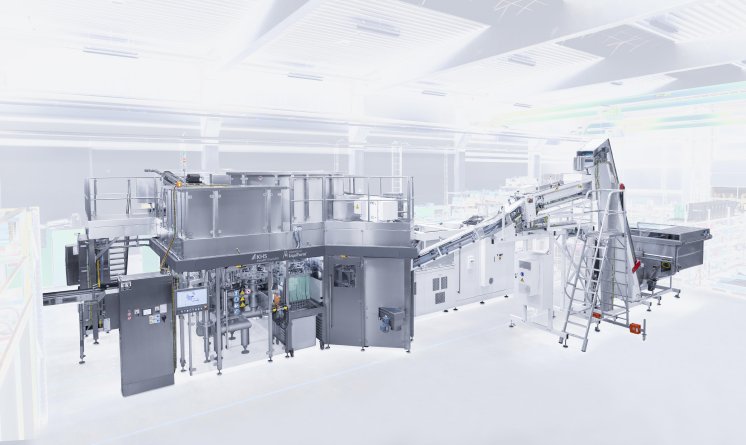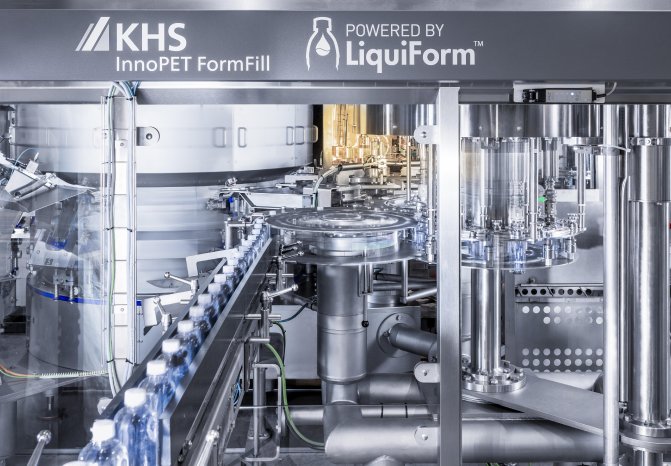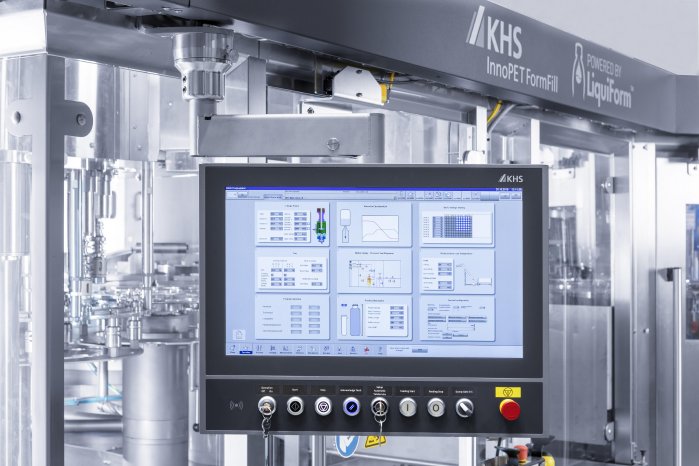KHS first presented its FormFill concept at drinktec in 2017. Back then the ambitious plan was to sufficiently mature the technology in a good two years, enabling the first customer to then profit from its particular benefits. “We’ve learned a lot from the initial concept to the production of the market-ready system,” says Frank Haesendonckx, head of Technology at KHS Corpoplast in Hamburg, Germany. “We’re proud that we’re right on schedule. FormFill is the next stage in development for container forming and filling.”
With its technology KHS combines two processes that were previously separate. On present machinery two individual function modules stretch blow mold the PET preform and then fill the resulting bottle in separate stages. With KHS FormFill bottlers can now form and at the same time fill containers made of PET or rPET on a single machine. The system therefore takes up 40% less space than the standard stretch blow molder/filler blocks common to date. The time saved by the form/fill wheel has even enabled parts of the capping process to be integrated at this point. This then results in the machine being able to prevent product loss during container conveying.
Flexible formats for a range of products
The current tried-and-tested system has been configured for still water. However, the technology is just as suitable for liquid soap and laundry detergent and a whole range of hot fill applications. The current container formats vary from bottles with a volume of 500 milliliters to those holding 1.5 liters. “For the market launch in the coming year we’re focusing on outputs of 12,000 to 24,000 bottles maximum per hour,” states Haesendonckx. KHS subsequently aims to also provide this technology for the medium and high performance ranges. “Here, we’re engaging in active discussion with our clients so that we can also satisfy specific customer requirements.”
Efficient and low on space
“Taking all of the savings into account, FormFill consumes up to 60% less energy compared to a current stretch blow molder/filler block,” Haesendonckx smiles. As in standard plastic container processing to date, the machine first heats the PET preforms. However, instead of compressed air a controlled volume flow of product forms the preforms into containers. This procedure has several advantages: as the inside skin of the containers cools faster than with the standard method through direct filling, FormFill produces containers of greater stiffness with the same wall thickness, thus permitting preform material to be saved. What is known as the ‘water hammer’ effect[1] makes design details such as logos more prominent, attracting a great deal of attention at the point of sale even without the presence of bottle labels. In a traditional compressed air process a blow pressure of up to 40 bar would be required to produce the same quality of container.
Another particular advantage is that after capping the trapped gas escapes from the product, creating a slight positive pressure in the container. “This also increases stability which has a positive effect on lightweight bottles especially,” explains Haesendonckx. Maintenance costs are also cut by the use of fewer components and format parts.
[1] The product filled into the container in fractions of a second presses the preform wall to the mold at an extremely high pressure thanks to the special physical conditions.





